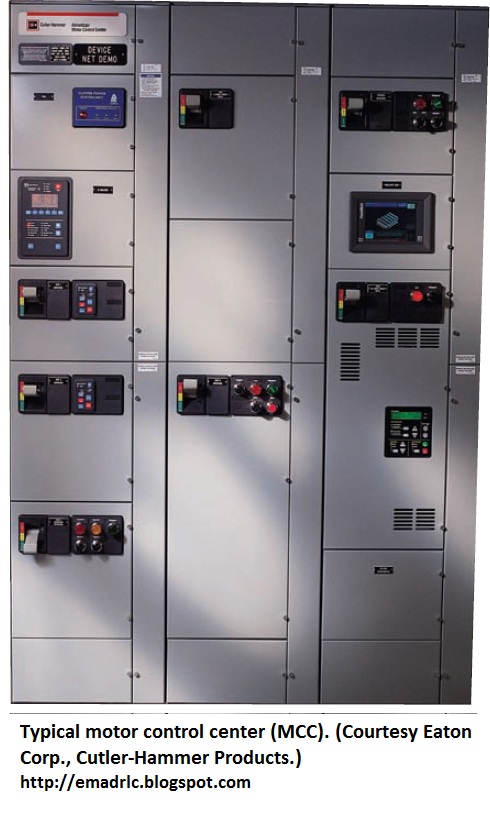A motor control center (MCC) is a modular cabinet system for powering and controlling motors in a factory. Several low-voltage MCCs in a factory may be powered from a main switchgear, which in turn gets its power from a transformer attached to the incoming line from the power company. MCCs are very common sights
in factories with heavy machinery, although the purpose they serve is changing.
MCC will be three bus bars to carry three-phase, 600 V, 60 Hz electricity. The buckets are intended to contain a circuit breaker, a motor starter, and a control power transformer, although their actual contents will vary widely according to the factory’s needs. The circuit breaker will have a handle that goes through the door to shut off the power without opening it.
Motor Starter From a MCC
Several years ago, MCCs housed almost all the control for motors in an industrial setting. The trend lately, however, has been to use the MCC only to provide points from which to distribute power to electrical panels. In this case, the MCC bucket will have only a circuit breaker and a handle to shut the circuit breaker off; the electrical panel would be a separate enclosure that houses all the motor control for a specific machine. The power and popularity of programmable logic controllers (PLC) for control and the size of high-horsepower variable-frequency drives have contributed to this trend, as they do not fit in a standard MCC very well.
Medium Voltage Motor Control Center
A medium-voltage controller for electrical equipment, such as motors, transformers, reactors, and capacitors, has an arc-resistant cabinet, swaged internal electrical connections, a one-piece self-aligning withdrawable finger cluster, a pullout instrument compartment, a load discharge device, cast fuse holders, a disconnect switch, a switch illuminator, low-power current transformers, and an optical temperature measuring system.
Internal electrical connections between controller components are made with connectors and cables. The cable conductors are swaged or compression welded in the connector barrels, forming a cold-welded electrical and mechanical junction.
The pull-out instrument compartment includes a sliding rack to which a hinged instrument mounting panel is attached. The mounting panel slides out of the compartment and swings away from the opening in the cabinet, allowing access to the cabinet internals.



No comments:
Post a Comment